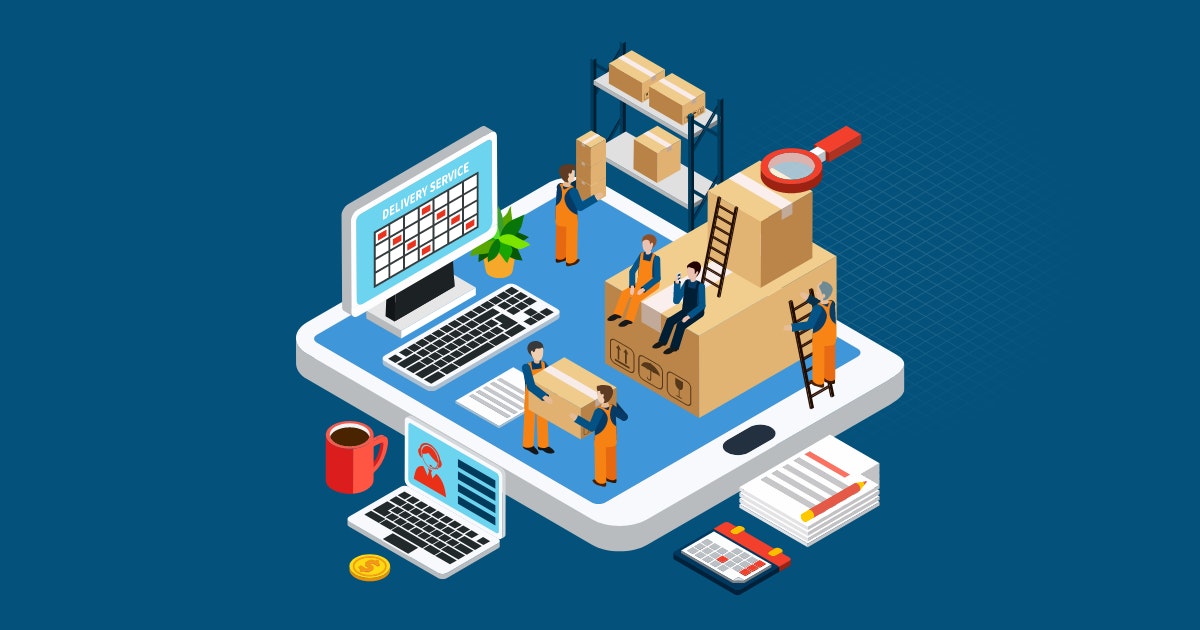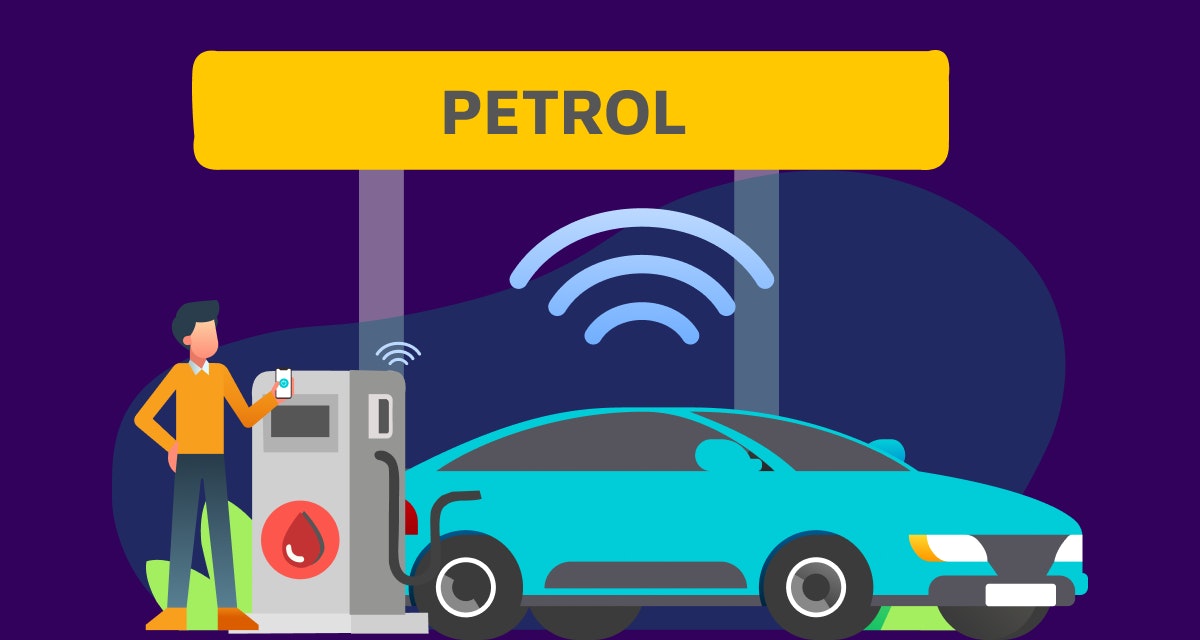Table of Content
Unless you have been living under a rock, you will agree the Internet of Things is a disruptive technology that can convert every industry's operational capabilities into an efficient one. The IoT-based fleet management, in particular, helps businesses run their transportation system with complete control, with numerous vehicles running simultaneously.
You see, fleet management is a critical process for logistics and supply chain businesses. Unfortunately, it becomes highly complicated with vehicles of varying make and capacity participating in the operations.
No wonder key challenges of fleet management include maintaining accurate records of vehicle location and health along with scheduling and routing vehicles to optimize efficiency. Besides tracking fuel usage and expenses, businesses must ensure vehicle and driver safety and compliance with government regulations.
What is IoT in fleet management?
IoT in fleet management using internet-connected sensors and devices to track, monitor, and manage vehicles in real time. It helps businesses optimize routes, improve safety, reduce fuel costs, and keep vehicles well maintained.
The role of IoT in fleet management is to provide real-time information about the location and status of vehicles. IoT helps in addressing fleet management challenges by providing data related to fuel usage, expenses, and traffic conditions. The information can optimize schedules, select routes, monitor driving habits, minimize fuel consumption, and improve safety.
For instance, a fleet manager can use IoT data to identify areas where vehicles spend too much time idling or driving below the speed limit and make appropriate adjustments to improve efficiency. The main uses of IoT include reducing expenses, making operations faster, and ensuring efficient solutions for different scenarios.
Fleet management is mainly required in industries that depend on transportation such as food delivery and logistics. With the growing user demand and fast service expectations, it becomes difficult to manage everything manually. IoT uses sensors, data analytics, visualization tools, and learning algorithms to make fleet management flexible and transparent.
How IoT is transforming fleet management
The Internet of Things is reshaping fleet management and is essential to improving operational effectiveness and maximizing resource use. IoT technology lets Fleet managers get real-time information on vehicle location, performance, and environmental factors. Thanks to this plethora of information, they can make data-driven decisions, optimize processes, and boost fleet performance.
IoT-enabled fleet management has recently seen the following advances and improvements:
1. Advanced Telematics:
Telematics solutions built on the Internet of Things offer deeper insights into vehicle performance and driver behavior. Modern sensors and connectivity technologies gather and send information about things like fuel usage, engine health, braking patterns, and acceleration. Fleet managers can use this information to discover maintenance issues, improve fuel efficiency, and promote safe driving habits.
2. Predictive Maintenance:
The Internet of Things (IoT) enables predictive maintenance operations by continuously monitoring the components and systems of moving vehicles. Thanks to embedded sensors and connections, key indicators like engine health, tyre pressure, and battery level can be remotely monitored. Fleet managers can reduce repair costs and avoid unplanned downtime by actively scheduling maintenance when potential issues are discovered early.
3. Autonomous Vehicle Integration:
Fleet management of autonomous vehicles requires IoT. IoT technology is required for autonomous vehicles to communicate with the environment, other vehicles, and centralised fleet management systems. Autonomous, safer, and more efficient operations are eventually made possible by the seamless coordination, data exchange, and fleet optimisation made possible by this connectivity.
4. Data Analytics and AI:
Strong analytics and AI capabilities are required to derive usable insights from the enormous amounts of data generated by IoT devices in fleet management. Fleet managers can use data analytics tools to monitor the efficiency of their drivers and vehicles, identify trends, and tweak their schedules and routes. Additionally, Artificial Intelligence systems may assess historical data to foresee the need for repairs, maximize fuel efficiency, and enhance fleet operations.
5. Integration with Supply Chain Management:
IoT-enabled fleet management solutions are increasingly integrated with supply chain management systems. This connection's end-to-end visibility allows fleet managers to monitor and manage the movement of commodities from the point of origin to the final destination. Real-time data transfer across systems for fleet management and supply chains facilitates planning, scheduling, and inventory management.
Are You Ready to Maximize Fleet ROI with IoT Technology?
Schedule a CallHow IoT fleet management works
IoT-powered fleet management systems share data between fleet managers and vehicles to improve visibility, productivity, and maintenance. Telematics service providers, insurance companies, service shops, and passengers benefit from higher maintenance efficiency, reduced costs, and more services. IoT typically works on five critical components of fleet management, namely:
1. Protection
IoT solutions can update the concerned person immediately for any minor technical glitch or any emergency. An issue can be solved before it gets more complicated.
2. Visualization
With IoT, drivers and managers can stay connected throughout the process so a driver can get a quick backup if required. Also, the manager can keep an eye on the fleet's condition.
3. Cost optimization
With IoT, it is easier to track the fleet regularly. Gradually, more time and resources can be saved.
4. Cloud connectivity
IoT enables cost-effectiveness and fast data processing as all the applications are connected through the cloud. Also, there is enough memory to compute such extensive data simultaneously.
5. Enhanced productivity
Fleet managers can utilize real-time updates from sensors in the fleet for strategic decision-making. IoT Data analytics allows them to optimize routes and achieve more even with reduced working hours.
Use cases of how IoT can help in fleet management
When the potential of IoT was unraveled a few years ago, fleet managers worldwide were filled with enthusiasm - at least those wanting to take their business to the next level. Naturally, new-age innovations triggered an unprecedented transformation in the fleet management industry.

IoT sensors, actuators, smart devices, and more - powered by IoT - have proved to be great pioneers of growth for fleet managers. Research shows that the global IoT fleet management market revenue is expected to touch $15,500 million by the end of 2024, which was merely $3,250 million in 2016!
That is a huge leap in just eight years. This also proves that the growth prospects of IoT are high and fleet managers are steadily adopting the technology. Let us study how:
1. Cargo management
The embedded IoT-powered sensors help ensure the security of cargo during transport. IoT helps in controlling temperature for preserving perishable goods and medicines. It is also helpful in monitoring the cargo in case of theft. Vibration sensors ensure fragile items reach the destination in proper condition.
2. Fleet maintenance
The inbuilt sensors and predictive maintenance platforms can detect any issues with a vehicle. The data gathered can be processed and analyzed to prevent future mishaps through continuous monitoring.
3. Driver management
Superior technologies such as blind-spot help and backup cameras can alert drivers and recommend them when rest is needed. The obtained video data can be stored for future reference. Installing cameras in the cabin allows managers to monitor driver behavior, such as drinking, sickness, or drowsiness.
4. Vehicle monitoring
The cameras and the inbuilt sensors help provide a clear view of the surroundings, ensuring the safety of vehicles. The IoT-based fleet management solution generates real-time updates of pedestrians, infrastructure, and other nearby objects. It also notifies the battery life and scheduled maintenance to alert the driver and prevent accidents.
5. Passenger information
Passenger information systems help in streamlining passenger interactions. It provides services such as paperless ticketing and WiFi to deliver helpful information about routes and services. Video feed helps gather data about passengers and defaulters. On the other hand, telematics can determine when in-cabin parts, such as handles or seats need replacement or repair.
6. Insurance company management
When vehicles get fewer accidents, insurance companies have to pay fewer claims. They also benefit by using telematics data to develop more thorough summaries for their underwriters.
7. Advertising of vehicle infotainment systems
Commercial vehicle infotainment systems can recommend relevant products or destinations contributing to efficient fleet management.
Applications of IoT in fleet management
From better rider experience to cost savings for insurance companies, IoT offers various stakeholders benefits beyond regular fleet management.

Whether enhancing fleet management or undertaking predictive maintenance, fleet managers can feel more confident with tools that help protect and manage their assets, vehicles, and employees. That is everything they want! Adding to that thought, here are the typical applications of IoT in fleet management:
1. AI-enabled fleet monitoring solutions
They provide a unified system to configure and interact with different devices on board without going back and forth between applications.
By using a unified system of live videos, fleet GPS tracking localization, and vehicle telematics, they offer a safe journey for customers using the suitable systems for efficient operations. IoT can also track driver behavior and performance, including speed and timing.
2. Optical sensors and cameras
Vision-based solutions use optical sensors and cameras to provide real-time and accurate updates for asset security and vehicle operation. They help vehicles avoid accidents and prevent theft by using deep learning models, detecting people in proximity. The reports are synced to a cloud-based portal for future references and analysis in case of accidents.
3. Real-time video monitoring
There are also systems with real-time video monitoring, recording, alarm notification, and video playback. They provide driver visual assistance that detects crowds and traffic for an efficient driving route. Assisting the driver in real-time, the solution helps avoid driver fatigue. It is also used for driver distraction monitoring and blind spot monitoring.
Its onboard surveillance system enhances the safety of vehicles and facilitates robust vehicle tracking. Along with AI functions, the system uses a sensor that triggers an alarm to avoid accidents.
Monitoring fleet operations in real-time
Fleet managers must constantly monitor their vehicles and drivers. IoT helps them ensure that their fleet is operating safely and efficiently. By using IoT devices and software, you can collect IoT data in the following ways:
1. Real-time geolocation tracking
One of the most critical aspects of fleet management is ensuring that vehicles are being used efficiently and that the drivers follow the designated routes.
Real-time geolocation tracking allows managers to see the location of all vehicles in real-time so that they can make more informed decisions about routing and dispatch. The technology can also track driver behavior, such as speeding or sudden braking, which can help improve customer and vehicle safety and reduce fuel costs.
2. Historical location tracking

It is a process that records the past locations of tracked assets. By tracking asset history, businesses can suggest optimal routes for their fleets. For example, by tracking the location of a delivery truck, a business can see how long it took to make specific deliveries and plan future deliveries accordingly.
Historical location data can also generate business intelligence reports about vehicle usage. This information can be used to decide future fleet purchases and employee scheduling.
How companies benefit from IoT-based fleet management solutions
IoT in fleet management helps improve manageability, savings, and visibility in cargo and passenger-load vehicles. The latest IoT-enabled systems benefit fleet managers and drivers, passengers, insurers, and advertisers - as seen previously. Here is how companies can conveniently benefit from IoT:
1. Real-Time Vehicle Health Monitoring
IoT-based fleet systems constantly monitor vehicle health, tracking metrics like engine status, tire pressure, and oil levels. This helps in early detection of issues, reducing breakdowns and extending vehicle life.
2. Improved Fuel Efficiency and Engine Health
IoT sensors optimize fuel usage by analyzing driving behaviors such as idling and harsh braking. This leads to better fuel economy and helps maintain engine performance over time.
3. End-to-End Fleet Visibility with Analytics
IoT platforms provide real-time data on vehicle movement, routes, and delivery status. This visibility supports route optimization, better resource planning, and improved decision-making.
4. Real-Time GPS and Fleet Activity Tracking
With telematics, fleet managers can monitor live GPS locations and recent vehicle activities. This enables faster response to delays, improved route adjustments, and better control.
5. Instant Emergency Alerts
In case of accidents or crashes, IoT devices send automatic alerts to the control center. This allows for quick action and faster support to ensure driver and vehicle safety.
6. Enhanced Security and Breakdown Assistance
IoT solutions use cameras and sensors to monitor security and detect unauthorized activity. In the event of a breakdown, the system can notify the nearest tow station for immediate help.
IoT In Predictive Maintenance: What To Know
Learn MoreThe Future of IoT in Fleet Management
The future of fleet management lies in IoT, which connects vehicles to the internet for real-time tracking, performance monitoring, and seamless data sharing. IoT sensors, GPS, telematics, and onboard diagnostics automate vehicle monitoring, maintenance alerts, and safety checks without human intervention. RFID boosts security and stock tracking. Overall, IoT makes fleet operations more efficient, safe, and cost-effective.
Let's Integrate IoT Into Your Fleet Management!
Let's Get StartedOver to you
IoT is not some fantasy that is still in the works. It is very much our reality. According to Statista, more than 75 billion IoT-connected devices will be in use. This only shows how the world around us is moving towards pervasive connectivity. Undoubtedly, it has also become the backbone of the fleet management industry among other sectors.
Fleet managers and business owners want to feel more confident about having an IoT-powered solution that makes them do their jobs efficiently. If you are looking for an IoT solution for your fleet, look no further.
We have previously worked on many projects in the logistics and supply chain sectors and can help you build a device you are proud of.
Book a Free 45-minute Consultation with Our IoT Experts Today! Get a customized roadmap and strategies to leverage IoT for fleet management.






